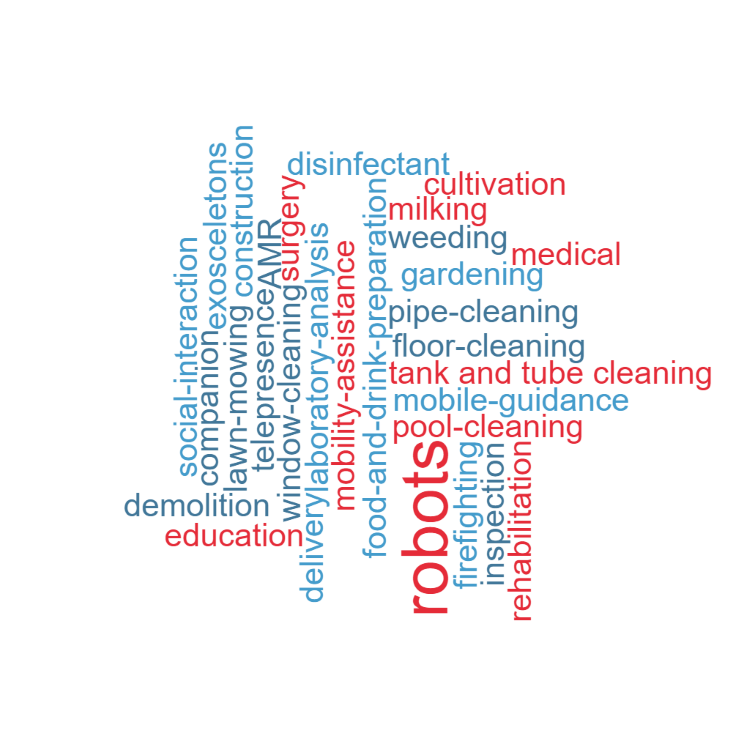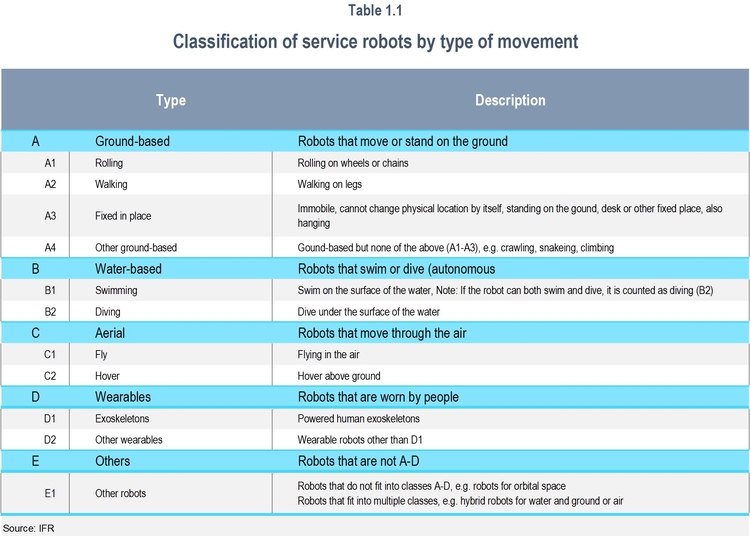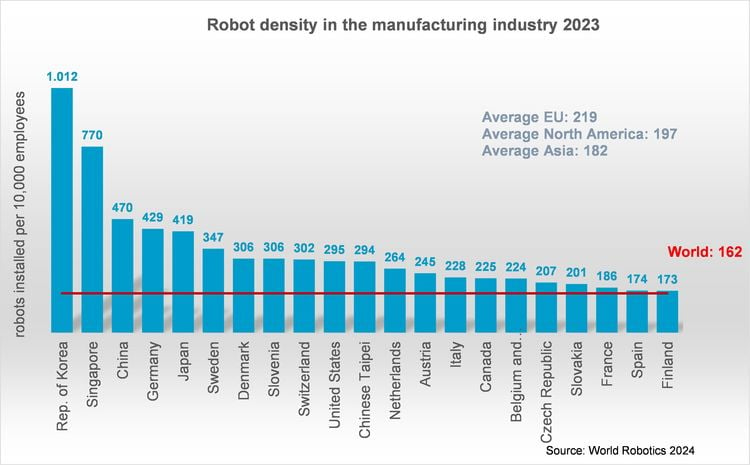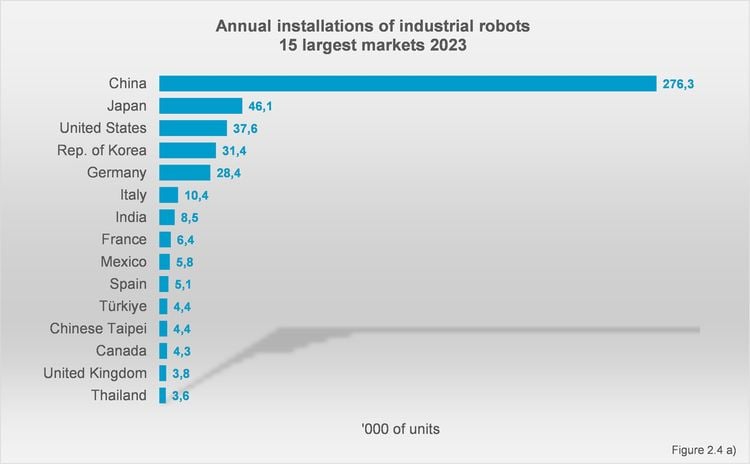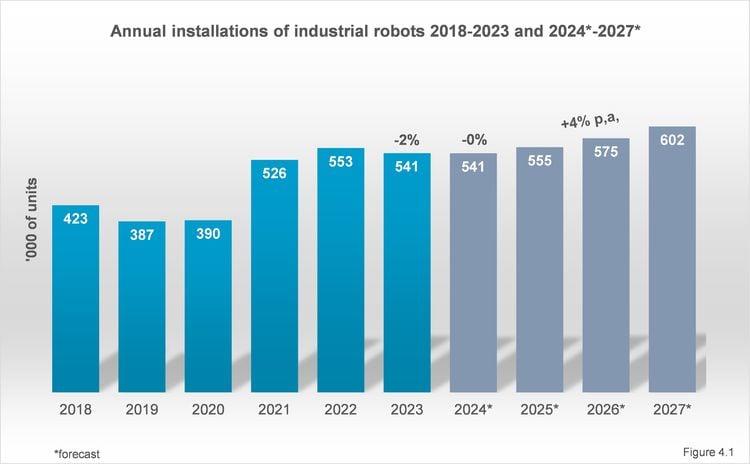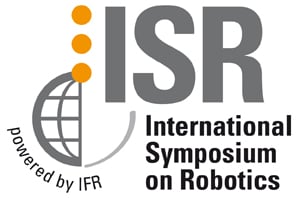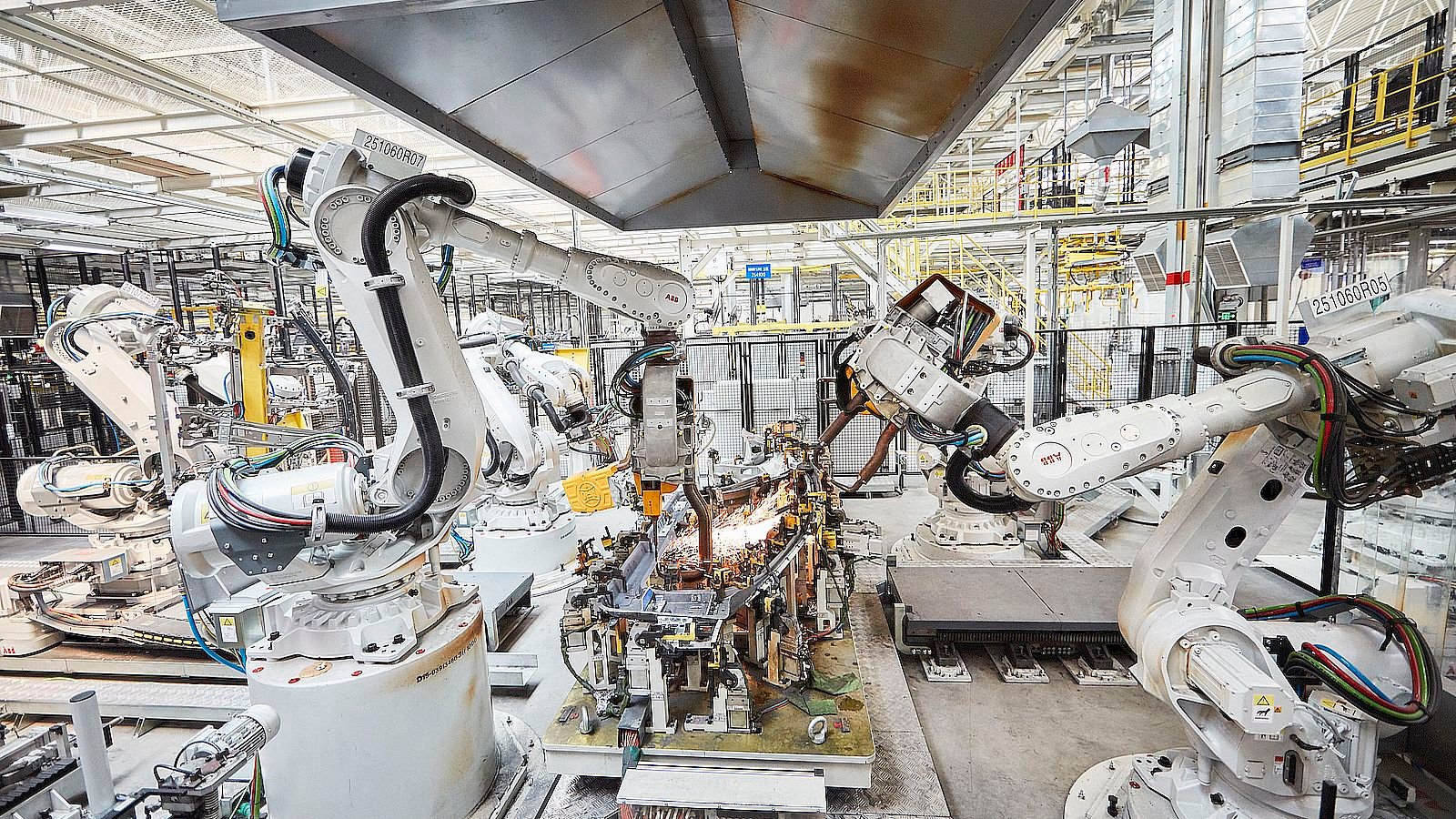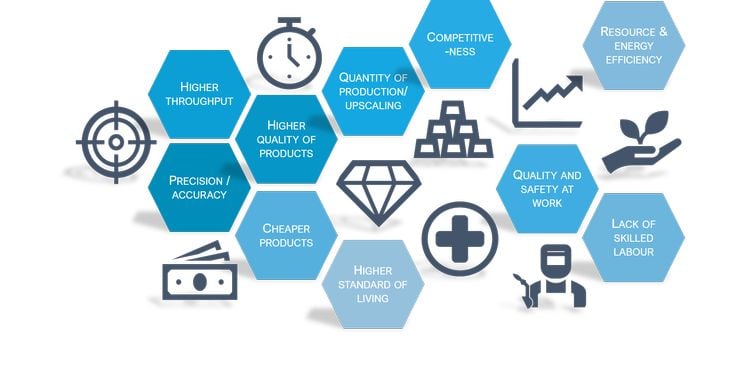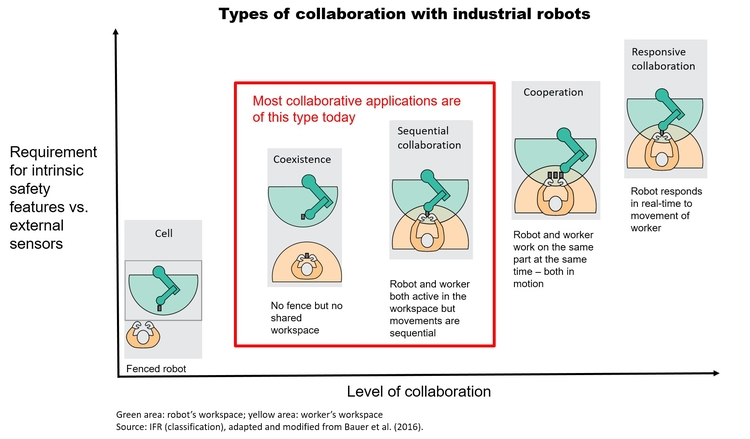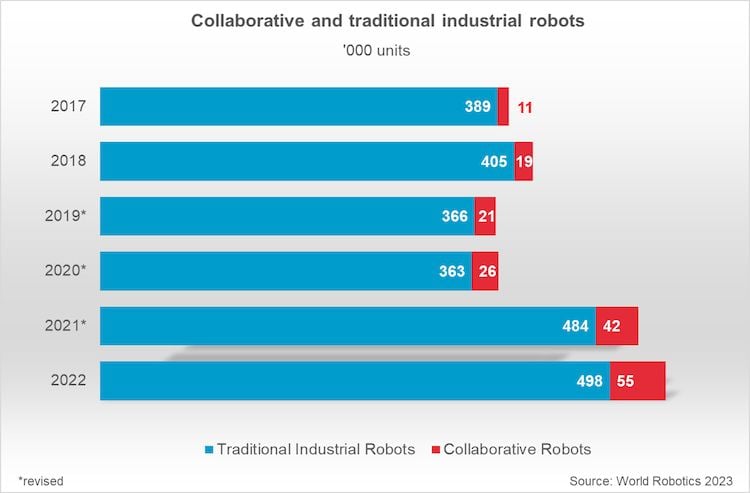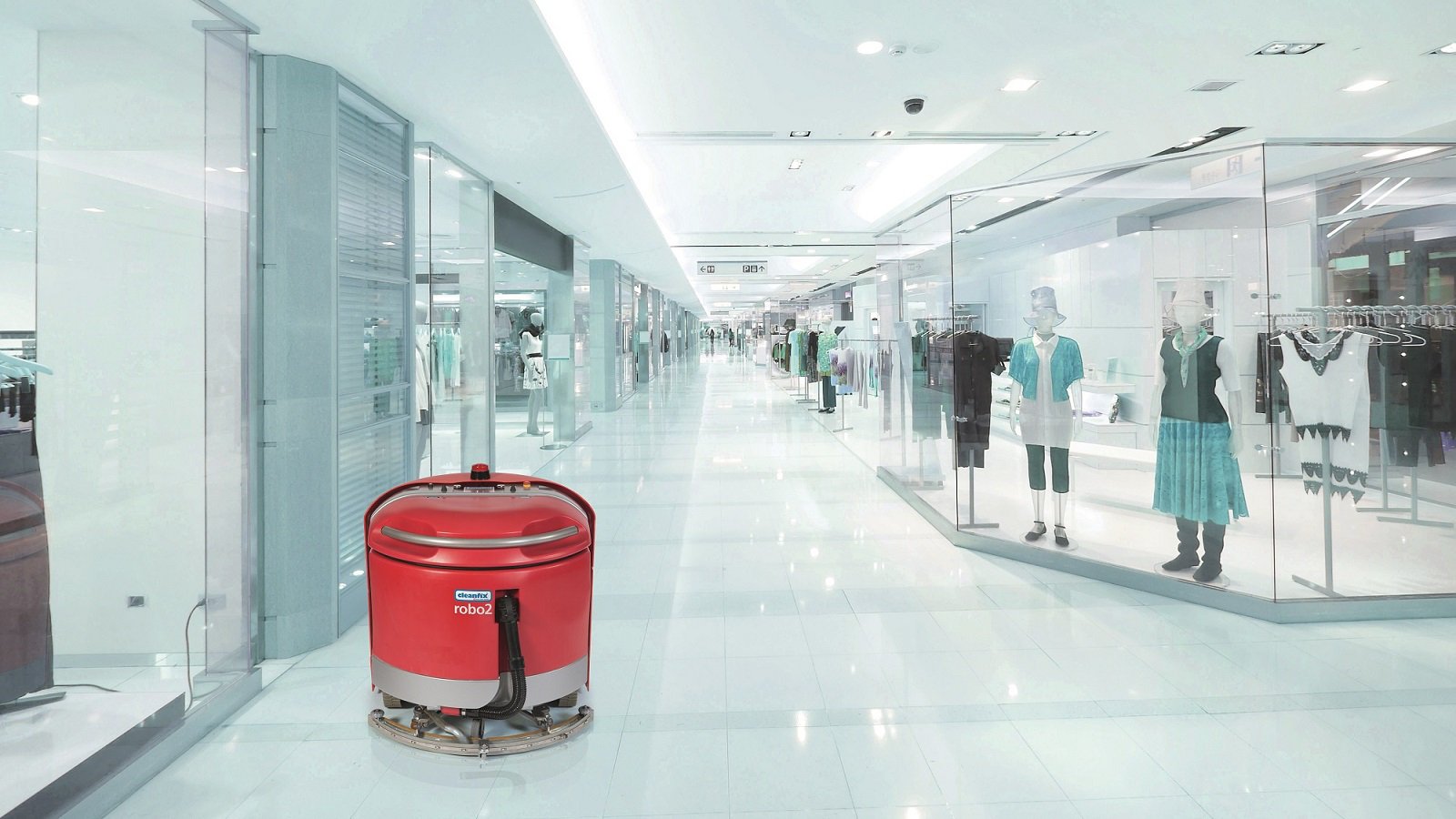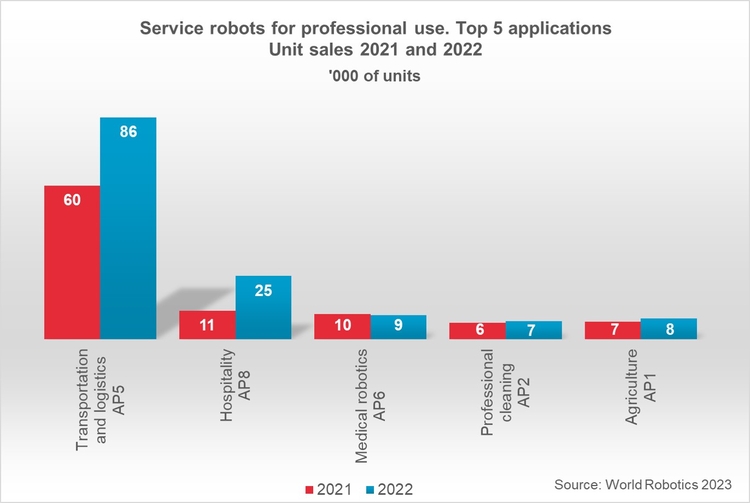1. An overview of data protection
General
The following gives a simple overview of what happens to your personal information when you visit our websites www.ifr.org, www.worldrobotics.org, www.go4robotics.com. Personal information is any data with which you could be personally identified. Detailed information on the subject of data protection can be found in our privacy policy found below.
Data collection on our website
Who is responsible for the data collection on this website?
The data collected on these websites are processed by the website operator. The operator’s contact details can be found in the website’s required credits.
How do we collect your data?
Some data are collected when you provide it to us. This could, for example, be data you enter on a contact form.
Other data are collected automatically by our IT systems when you visit the website. These data are primarily technical data such as the browser and operating system you are using or when you accessed the page. These data are collected automatically as soon as you enter our website.
What do we use your data for?
Part of the data is collected to ensure the proper functioning of the website. Other data can be used to analyze how visitors use the site.
What rights do you have regarding your data?
You always have the right to request information about your stored data, its origin, its recipients, and the purpose of its collection at no charge. You also have the right to request that it be corrected, blocked, or deleted. You can contact us at any time using the address given in the legal notice if you have further questions about the issue of privacy and data protection. You may also, of course, file a complaint with the competent regulatory authorities.
Analytics and third-party tools
When visiting our website, statistical analyses may be made of your surfing behavior. This happens primarily using cookies and analytics. The analysis of your surfing behavior is usually anonymous, i.e. we will not be able to identify you from this data. You can object to this analysis or prevent it by not using certain tools. Detailed information can be found in the following privacy policy.
You can object to this analysis. We will inform you below about how to exercise your options in this regard.
2. General information and mandatory information
Data protection
The operators of this website take the protection of your personal data very seriously. We treat your personal data as confidential and in accordance with the statutory data protection regulations and this privacy policy.
If you use this website, various pieces of personal data will be collected. Personal information is any data with which you could be personally identified. This privacy policy explains what information we collect and what we use it for. It also explains how and for what purpose this happens.
Please note that data transmitted via the internet (e.g. via email communication) may be subject to security breaches. Complete protection of your data from third-party access is not possible.
Notice concerning the party responsible for this website
The party responsible for processing data on this website is:
IFR International Federation of Robotics
c/o VDMA Robotic and Automation
Lyoner Str. 18
60528 Frankfurt - Germany
Contact:
Dr. Susanne Bieller
General Secretary
Email: secretariat (at) ifr.org
Telephone: +49 69 6603-1502
The responsible party is the natural or legal person who alone or jointly with others decides on the purposes and means of processing personal data (names, email addresses, etc.).
Revocation of your consent to the processing of your data
Many data processing operations are only possible with your express consent. You may revoke your consent at any time with future effect. An informal email making this request is sufficient. The data processed before we receive your request may still be legally processed.
Right to file complaints with regulatory authorities
If there has been a breach of data protection legislation, the person affected may file a complaint with the competent regulatory authorities. The competent regulatory authority for matters related to data protection legislation is the data protection officer of the Germany state in which our company is headquartered. A list of data protection officers and their contact details can be found at the following link: https://ec.europa.eu/info/depa....
Right to data portability
You have the right to have data which we process based on your consent or in fulfillment of a contract automatically delivered to yourself or to a third party in a standard, machine-readable format. If you require the direct transfer of data to another responsible party, this will only be done to the extent technically feasible.
SSL or TLS encryption
This site uses SSL or TLS encryption for security reasons and for the protection of the transmission of confidential content, such as the inquiries you send to us as the site operator. You can recognize an encrypted connection in your browser’s address line when it changes from “http://” to “https://” and the lock icon is displayed in your browser’s address bar.
If SSL or TLS encryption is activated, the data you transfer to us cannot be read by third parties.
Information, blocking, deletion
As permitted by law, you have the right to be provided at any time with information free of charge about any of your personal data that is stored as well as its origin, the recipient and the purpose for which it has been processed. You also have the right to have this data corrected, blocked or deleted. You can contact us at any time using the address given in our legal notice if you have further questions on the topic of personal data.
Opposition to promotional emails
We hereby expressly prohibit the use of contact data published in the context of website legal notice requirements with regard to sending promotional and informational materials not expressly requested. The website operator reserves the right to take specific legal action if unsolicited advertising material, such as email spam, is received.
3. Data collection on our website
Cookies
Some of our web pages use cookies. Cookies do not harm your computer and do not contain any viruses. Cookies help make our website more user-friendly, efficient, and secure. Cookies are small text files that are stored on your computer and saved by your browser.
Most of the cookies we use are so-called “session cookies.” They are automatically deleted after your visit. Other cookies remain in your device’s memory until you delete them. These cookies make it possible to recognize your browser when you next visit the site.
You can configure your browser to inform you about the use of cookies so that you can decide on a case-by-case basis whether to accept or reject a cookie. Alternatively, your browser can be configured to automatically accept cookies under certain conditions or to always reject them, or to automatically delete cookies when closing your browser. Disabling cookies may limit the functionality of this website.
Cookies which are necessary to allow electronic communications or to provide certain functions you wish to use (such as the shopping cart) are stored pursuant to Art. 6 paragraph 1, letter f of GDPR. The website operator has a legitimate interest in the storage of cookies to ensure an optimized service provided free of technical errors. If other cookies (such as those used to analyze your surfing behavior) are also stored, they will be treated separately in this privacy policy.
Server log files
The website provider automatically collects and stores information that your browser automatically transmits to us in “server log files”. These are:
- Browser type and browser version
- Operating system used
- Referrer URL
- Host name of the accessing computer
- Time of the server request
- IP address
These data will not be combined with data from other sources.
The basis for data processing is Art. 6 (1) (f) GDPR, which allows the processing of data to fulfill a contract or for measures preliminary to a contract.
4. Analytics and advertising
Google Analytics
This website uses Google Analytics, a web analytics service. It is operated by Google Inc., 1600 Amphitheatre Parkway, Mountain View, CA 94043, USA.
Google Analytics uses so-called “cookies”. These are text files that are stored on your computer and that allow an analysis of the use of the website by you. The information generated by the cookie about your use of this website is usually transmitted to a Google server in the USA and stored there.
Google Analytics cookies are stored based on Art. 6 (1) (f) GDPR. The website operator has a legitimate interest in analyzing user behavior to optimize both its website and its advertising.
IP anonymization
We have activated the IP anonymization feature on this website. Your IP address will be shortened by Google within the European Union or other parties to the Agreement on the European Economic Area prior to transmission to the United States. Only in exceptional cases is the full IP address sent to a Google server in the US and shortened there. Google will use this information on behalf of the operator of this website to evaluate your use of the website, to compile reports on website activity, and to provide other services regarding website activity and Internet usage for the website operator. The IP address transmitted by your browser as part of Google Analytics will not be merged with any other data held by Google.
Browser plugin
You can prevent these cookies being stored by selecting the appropriate settings in your browser. However, we wish to point out that doing so may mean you will not be able to enjoy the full functionality of this website. You can also prevent the data generated by cookies about your use of the website (incl. your IP address) from being passed to Google, and the processing of these data by Google, by downloading and installing the browser plugin available at the following link: https://tools.google.com/dlpage/gaoptout?hl=en.
Objecting to the collection of data
You can prevent the collection of your data by Google Analytics by clicking on the following link. An opt-out cookie will be set to prevent your data from being collected on future visits to this site: Disable Google Analytics.
For more information about how Google Analytics handles user data, see Google’s privacy policy: https://support.google.com/analytics/answer/6004245?hl=en.
Demographic data collection by Google Analytics
This website uses Google Analytics’ demographic features. This allows reports to be generated containing statements about the age, gender, and interests of site visitors. This data comes from interest-based advertising from Google and third-party visitor data. This collected data cannot be attributed to any specific individual person. You can disable this feature at any time by adjusting the ads settings in your Google account or you can forbid the collection of your data by Google Analytics as described in the section “Refusal of data collection”.
5. Newsletter/Press Releases
Newsletter data
If you would like to receive our newsletter or press releases, we require a valid email address and your name (optional).
You can revoke consent to the storage of your data and email address as well as their use for sending the newsletter/press releases at any time, e.g. through the “unsubscribe” link in the newsletter/press release or through the registration form on our webpage. The data processed before we receive your request may still be legally processed.
The data provided when registering for the newsletter/press releases will be used to distribute the newsletter/press release until you cancel your subscription when said data will be deleted. Data we have stored for other purposes (e.g. email addresses for the members area) remain unaffected.
Google reCAPTCHA
We use the Google service reCaptcha to determine whether a person or a computer makes a specific entry in our press release or newsletter form. Google uses the following information to determine if you are a human being or a computer: IP address of the terminal device you are using, the website you are visiting and on which the captcha is integrated, the date and duration of the visit, the identification data of the browser and operating system type used, Google account if you are logged in to Google, mouse movements on the reCaptcha areas and tasks for which you must identify images. The legal basis for the described data processing is Art. 6 para. 1 lit. f General Data Protection Regulation. There is a legitimate interest on our part in this data processing to ensure the security of our website and to protect us from automated input (attacks).
CleverReach
The distribution of the newsletter will be carried out by CleverReach GmbH & Co. KG, a newsletter service provider located in Muehlenstr. 43, 26180 Rastede,Germany.
The email addresses and names of our newsletter receivers will be stored on the servers of CleverReach in the EU. CleverReach uses this information only for the distribution and analysis of IFR newsletters. In addition, CleverReach may use this information for optimizing or improving their services. But CleverReach does not use your data neither for their own purpose nor for third parties.
6. Plugins and tools
YouTube
Our website uses plugins from YouTube, which is operated by Google. The operator of the pages is YouTube LLC, 901 Cherry Ave., San Bruno, CA 94066, USA.
If you visit one of our pages featuring a YouTube plugin, a connection to the YouTube servers is established. Here the YouTube server is informed about which of our pages you have visited.
If you’re logged in to your YouTube account, YouTube allows you to associate your browsing behavior directly with your personal profile. You can prevent this by logging out of your YouTube account.
YouTube is used to help make our website appealing. This constitutes a justified interest pursuant to Art. 6 (1) (f) GDPR.
Further information about handling user data, can be found in the data protection declaration of YouTube.
This website uses the official YouTube API (https://developers.google.com/youtube/v3/). Please refer to Youtube’s Terms of Service (http://youtube.com/t/terms).
By using the Youtube API Clients embedded into our website, users are agreeing to be bound by the YouTube Terms of Service.
Twitter plugin
Functions of the Twitter service have been integrated into our website and app. These features are offered by Twitter Inc., 1355 Market Street, Suite 900, San Francisco, CA 94103, USA. When you use Twitter and the “Retweet” function, the websites you visit are connected to your Twitter account and made known to other users. In doing so, data will also be transferred to Twitter. We would like to point out that, as the provider of these pages, we have no knowledge of the content of the data transmitted or how it will be used by Twitter. For more information please check Twitter’s privacy policy.
Your privacy preferences with Twitter can be modified in your account settings.
Share content via Plugins (Facebook, Google+1, Twitter & Co.)
The content of our webpage may be shared in social networks like Facebook, Twitter, Google+ and Linkedin. For this purpose we use the tool Mashshare. This tool connects directly. When you use this tool, the websites you visit are connected to your social network account and made known to other users but not before using the button.
This tool will not automatically transfer your user data to these social networks. The user must log on before sharing information. The tool opens a separate window which must be confirmed by the user before sending information to the social platform.
Facebook-Plugins (Like & Share-Button)
Our website uses plugins of the social network Facebook provided by Facebook Inc., 1 Hacker Way, Menlo Park, California 94025, USA. The plugin is labeled with “Facebook”.
When you use this plugin button, the websites you visit are connected to your Facebook account and made known to other users. You will be able to add content of our webpage to your facebook profile. In doing so, data will also be transferred to Facebook. We would like to point out that, as the provider of these pages, we have no knowledge of the content of the data transmitted or how it will be used by Facebook. For more information please check Facebook’s privacy policy.
If you not desire that Facebook collects your data of your visit, please log out of your Facebook user account.



